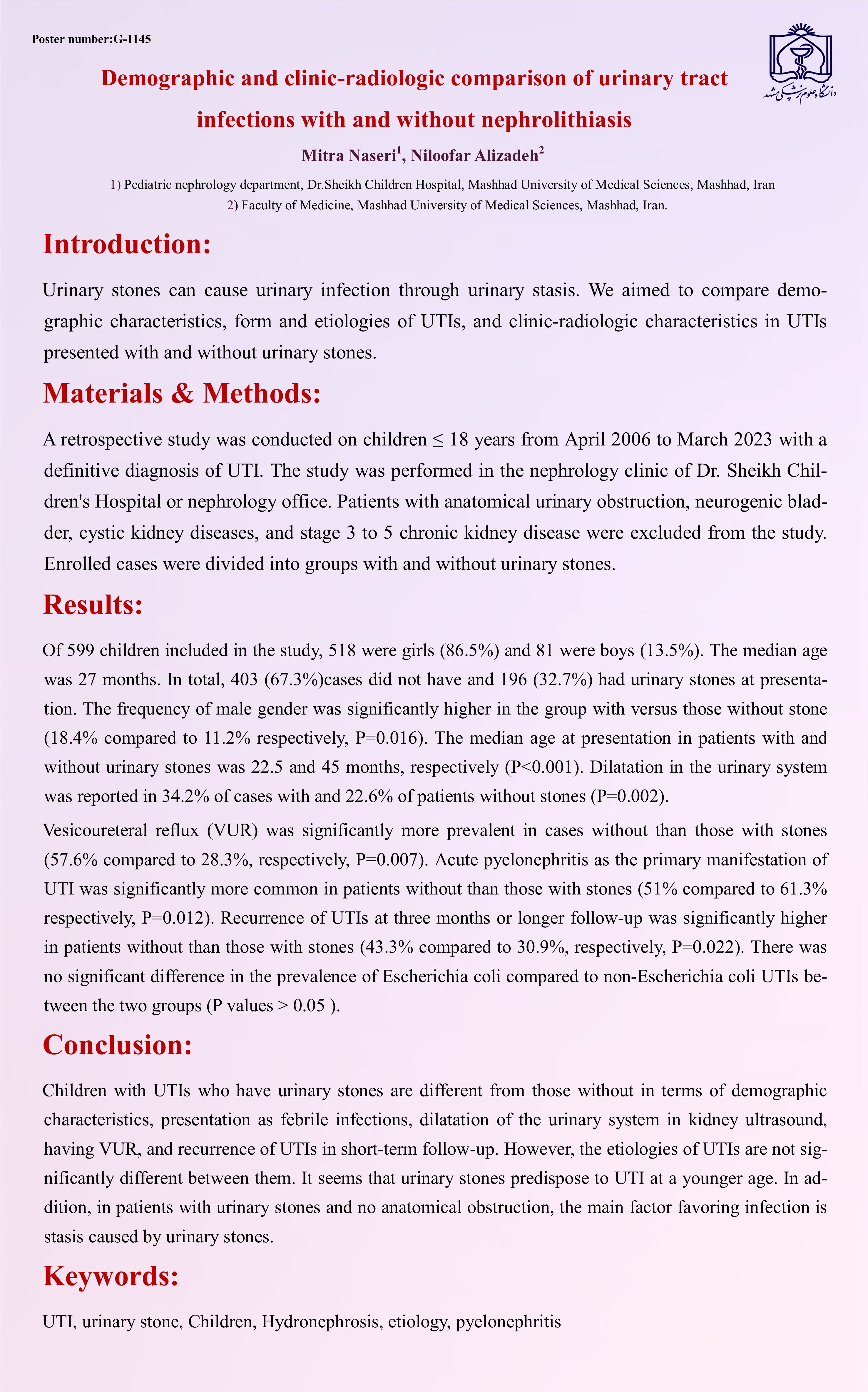مقایسه دموگرافیک و کلینیکی رادیولوژیک عفونتهای ادراری با و بدون نفرولیتیازیس
کد: G-1143
نویسندگان: میترا ناصری © ℗, نیلوفر علیزاده
زمان بندی: زمان بندی نشده!
دانلود: دانلود پوستر
خلاصه مقاله:
خلاصه مقاله
Introduction: Urinary stones can cause urinary infection through urinary stasis. We aimed to compare demographic characteristics, form and etiologies of UTIs, and clinic-radiologic characteristics in UTIs presented with and without urinary stones. Materials & Methods: A retrospective study was conducted on children ≤ 18 years from April 2006 to March 2023 with a definitive diagnosis of UTI. The study was performed in the nephrology clinic of Dr. Sheikh Children's Hospital or nephrology office. Patients with anatomical urinary obstruction, neurogenic bladder, cystic kidney diseases, and stage 3 to 5 chronic kidney disease were excluded from the study. Enrolled cases were divided into groups with and without urinary stones. Results: Of 599 children included in the study, 518 were girls (86.5%) and 81 were boys (13.5%). The median age was 27 months. In total, 403 (67.3%)cases did not have and 196 (32.7%) had urinary stones at presentation. The frequency of male gender was significantly higher in the group with versus those without stone (18.4% compared to 11.2% respectively, P=0.016). The median age at presentation in patients with and without urinary stones was 22.5 and 45 months, respectively (P0.001). Dilatation in the urinary system was reported in 34.2% of cases with and 22.6% of patients without stones (P=0.002). Vesicoureteral reflux (VUR) was significantly more prevalent in cases without than those with stones(57.6% compared to 28.3%, respectively, P=0.007). Acute pyelonephritis as the primary manifestation of UTI was significantly more common in patients without than those with stones (51% compared to 61.3% respectively, P=0.012). Recurrence of UTIs at three months or longer follow-up was significantly higher in patients without than those with stones (43.3% compared to 30.9%, respectively, P=0.022). There was no significant difference in the prevalence of Escherichia coli compared to non-Escherichia coli UTIs between the two groups (P values 0.05 ). Conclusion: Children with UTIs who have urinary stones are different from those without in terms of demographic characteristics, presentation as febrile infections, dilatation of the urinary system in kidney ultrasound, having VUR, and recurrence of UTIs in short-term follow-up. However, the etiologies of UTIs are not significantly different between them.
کلمات کلیدی
UTI, urinary stone , Children, Hydronephrosis, etiology, pyelonephritis
